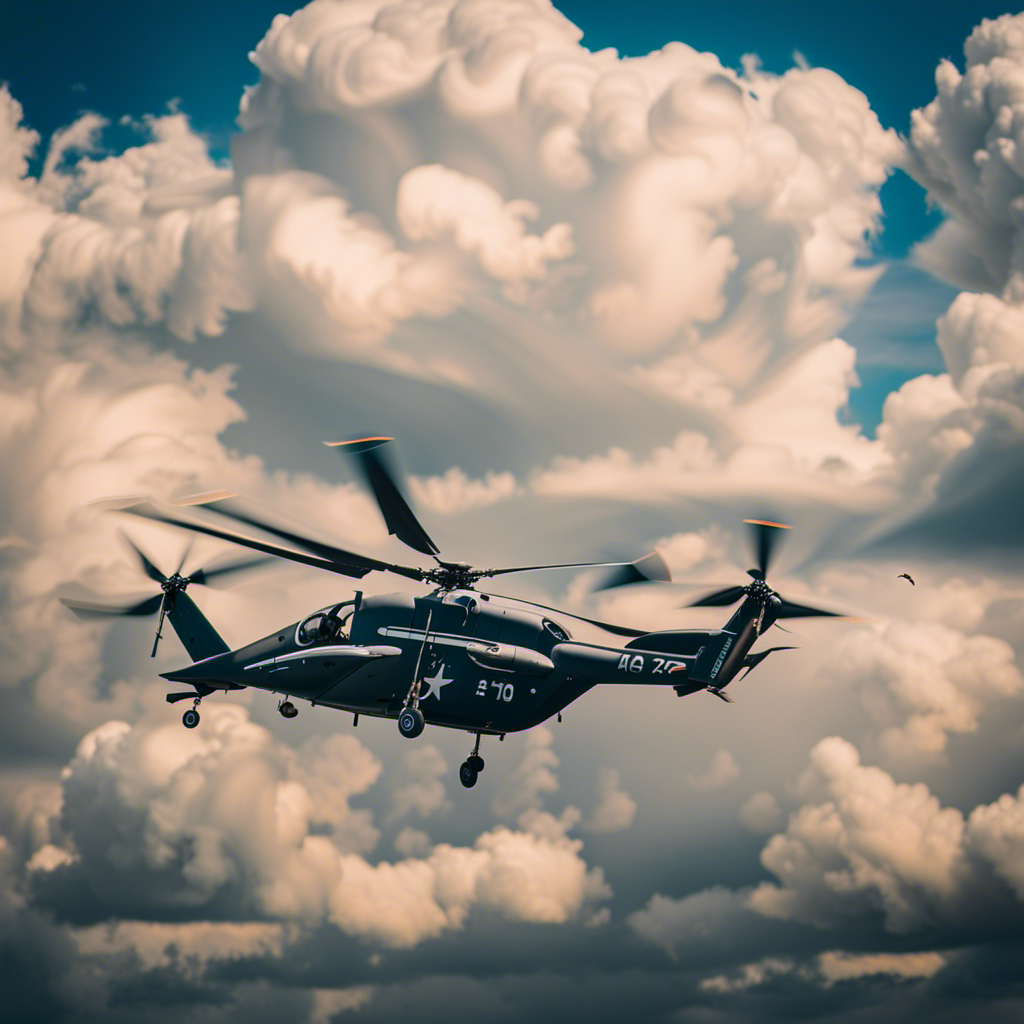Embark on an exciting journey through the world of aviation with us. Get ready for an in-depth exploration of various types of aircraft, including commercial airlines, combat fighters, helicopters, private jets, cargo planes, and gliders.
Prepare to be captivated by the intricate details and technical marvels of these sky-bound machines. Join me as we unravel the secrets and marvel at the remarkable engineering that allows us to defy gravity and craft the sky.
Key Takeaways
- Cargo planes come in various sizes, which determine their capacity and range.
- Cargo planes have cargo holds and loading systems for efficient loading and unloading.
- Reinforced floors in cargo planes ensure the safe transportation of heavy cargo.
- Gliders rely on updrafts and thermals for unpowered flight, and their wing design maximizes lift and minimizes drag.
Commercial Airliners
Commercial airliners are the primary mode of transportation for long-distance travel. When it comes to commercial airliner safety, multiple systems and protocols are in place to ensure passenger well-being. From advanced avionics to rigorous maintenance checks, airlines prioritize the safety of their passengers above all else.
However, commercial aviation also has an impact on climate change. The emissions from aircraft contribute to the greenhouse effect, leading to global warming. To address this issue, the aviation industry has been working on developing more fuel-efficient aircraft and investing in sustainable aviation fuels. Transitioning to cleaner technologies and adopting eco-friendly practices are crucial steps in reducing the environmental footprint of commercial aviation.
Now, let’s delve into the world of fighter jets, which serve a different purpose altogether.
Fighter Jets
When exploring the world of military aircraft, it’s impossible to ignore the high-speed capabilities of fighter jets. These cutting-edge machines play a crucial role in modern warfare. They utilize their speed, maneuverability, and advanced technology to gain a tactical advantage.
From state-of-the-art weapon systems to sophisticated avionics, fighter jets are equipped with an array of advanced technologies. These technologies enable them to dominate the skies and protect national security.
Uncover the High-Speed World of Military Aircraft
Exploring the high-speed world of military aircraft can reveal the advanced technology and capabilities that these planes possess.
When it comes to speed, military drones and supersonic jets are at the forefront.
Military drones, also known as unmanned aerial vehicles (UAVs), have revolutionized modern warfare. These unmanned aircraft can reach incredible speeds while conducting reconnaissance, surveillance, and even targeted strikes. Equipped with cutting-edge technology, military drones can navigate through enemy airspace undetected, providing valuable intelligence to commanders on the ground.
On the other hand, supersonic jets like the F-35 Lightning II or the Russian Sukhoi Su-57 are designed to break the sound barrier and fly at speeds exceeding Mach 1. These high-performance aircraft provide the military with rapid response capabilities, enabling them to quickly engage and neutralize threats.
Understanding the role of fighter jets in modern warfare requires a deep dive into their capabilities, strategic importance, and the ever-evolving nature of aerial combat.
Understand the Role of Fighter Jets in Modern Warfare
Understanding the capabilities and strategic importance of fighter jets in modern warfare is crucial for military commanders. Fighter jets play a vital role in air defense, providing a powerful deterrent against enemy aircraft and missiles. Their speed, maneuverability, and advanced weaponry allow them to engage and neutralize threats with precision and effectiveness. In geopolitical conflicts, fighter jets have a significant impact, both in terms of military superiority and signaling strength to adversaries.
Here are five key reasons why fighter jets are essential in modern warfare:
- Superior aerial combat capability
- Quick response time and rapid deployment
- Ability to conduct reconnaissance and gather intelligence
- Flexibility in engaging ground and naval targets
- Enhancing deterrence and projecting military power
These factors make fighter jets indispensable assets in maintaining air superiority and achieving strategic objectives.
Now, let’s delve into the advanced technology and weapons systems used in fighter jets.
Learn about the Advanced Technology and Weapons Systems Used in Fighter Jets
The advanced technology and weapons systems used in fighter jets greatly enhance their combat capabilities. These cutting-edge systems are designed to provide superior situational awareness, precision targeting, and unmatched firepower.
One of the key advancements is the integration of advanced radar systems, such as Active Electronically Scanned Array (AESA) radars, which offer increased detection range and improved target tracking. Additionally, fighter jets are equipped with state-of-the-art avionics, including advanced flight control systems and data link capabilities, allowing for seamless communication and coordination with ground forces.
The weapons systems on board these aircraft include guided missiles, smart bombs, and air-to-air and air-to-ground munitions, all of which can be deployed with exceptional accuracy. This combination of advanced technology and weapons systems empowers fighter jets to dominate the skies and effectively carry out their missions.
As we transition into the discussion about helicopters, it is important to note that while fighter jets excel in speed and maneuverability, helicopters possess unique capabilities that make them indispensable in certain roles.
Helicopters
Helicopters are known for their ability to hover in the air, providing a unique and versatile mode of transportation. However, ensuring helicopter safety and maintaining these complex machines is of utmost importance.
Safety measures are implemented through meticulous maintenance procedures. Regular inspections, including visual checks, component testing, and system diagnostics, are conducted to identify any potential issues. Additionally, routine maintenance tasks such as fluid changes, parts replacements, and software updates are essential to keep the helicopter in optimal condition.
A well-maintained helicopter not only maximizes safety but also enhances performance and extends the aircraft’s lifespan.
Transitioning to the topic of private jets, these luxurious aircraft offer unparalleled comfort and convenience in air travel.
Private Jets
Private jets provide a luxurious and convenient mode of transportation for those who desire comfort and efficiency in air travel. These aircraft are specifically built to cater to the needs of high-profile individuals and business executives. With their sleek design and advanced technology, private jets offer a range of features that make them the epitome of luxury travel in the realm of business aviation.
One key feature of private jets is their spacious and opulent interiors. Meticulously designed cabins are adorned with plush furnishings, state-of-the-art entertainment systems, and luxurious amenities. This creates an ambiance of pure indulgence, allowing passengers to relax and enjoy their journey in utmost comfort and style.
Another feature that sets private jets apart is personalized service. From personalized gourmet meals to dedicated flight attendants, every aspect of the journey is tailored to the passenger’s preferences. This bespoke service enhances the overall experience, making it truly unforgettable.
In addition to luxury and personalized service, private jets also offer time-saving efficiency. These aircraft have the advantage of convenience and flexibility. They can fly into smaller airports and avoid crowded terminals, allowing passengers to save valuable time and arrive closer to their final destination.
As we delve into the world of aircraft, let’s now transition to the next section, where we will explore the realm of cargo planes.
Cargo Planes
Now, let’s take a closer look at how cargo planes efficiently transport goods across long distances.
Exploring cargo plane sizes, I will delve into the world of cargo plane operations. Cargo planes come in various sizes, ranging from small turboprop aircraft to large jumbo jets. The size of the cargo plane determines its capacity and range, allowing it to carry different volumes of goods over different distances.
Understanding cargo plane operations is essential in order to comprehend the intricate process of transporting goods. These planes are designed with spacious cargo holds, equipped with loading systems that facilitate efficient loading and unloading of goods. Additionally, cargo planes often have reinforced floors to withstand the weight of heavy cargo. This ensures that goods are transported safely and securely.
Transitioning seamlessly into the next section, let’s now explore the fascinating world of gliders.
Gliders
Gliders, also known as sailplanes, rely on updrafts and thermals to stay aloft without the use of an engine. These silent and graceful aircraft offer a unique perspective of flight, requiring a deep understanding of aerodynamics and unpowered flight techniques.
Here are four key aspects to explore when delving into the world of gliders:
-
Wing Design: Gliders have long, slender wings with a high aspect ratio to maximize lift and minimize drag. This design allows them to efficiently exploit rising air currents.
-
Weight and Balance: Maintaining the right weight distribution is crucial for glider stability. Pilots carefully adjust the position of ballast and passengers to maintain an optimal center of gravity.
-
Flying Techniques: Glider pilots skillfully utilize thermal soaring, ridge soaring, and wave soaring to gain altitude and extend their flight time.
-
Safety Measures: Given the absence of an engine, gliders must prioritize safety. This includes thorough pre-flight inspections, emergency procedures, and staying vigilant for potential hazards.
Exploring the intricate aerodynamics and mastering the unpowered flight techniques of gliders opens up a world of endless possibilities in the sky.
Frequently Asked Questions
What are the most common reasons for delays in commercial airliner flights?
The most common reasons for flight delays in commercial airliners are weather conditions, such as storms or strong winds, which can impact flight schedules by causing restrictions or cancellations.
How fast can a fighter jet fly and what is its maximum altitude?
Fast and furious, fighter jets soar through the sky at supersonic speeds. Capable of reaching Mach 2 or more, these powerful machines can climb to heights exceeding 50,000 feet, dominating the aerial battlefield.
How do helicopters hover in the air without moving forward or backward?
Helicopter mechanics allow for hovering in the air without forward or backward movement. By manipulating the aerodynamic principles of lift, thrust, and drag, helicopters can maintain a stable position using their rotor blades and control systems.
What are the average costs associated with owning and maintaining a private jet?
The average cost of owning and maintaining a private jet can range from $700,000 to $4 million annually. This cost breakdown includes fuel, crew salaries, insurance, hangar fees, and regular maintenance. To reduce expenses, it is advisable to follow maintenance tips provided by the manufacturer.
How do cargo planes handle the loading and unloading of heavy freight?
Cargo planes handle the loading and unloading of heavy freight using various loading techniques and ensuring proper weight distribution. This is crucial for maintaining balance and stability during flight, preventing any potential accidents or damage to the aircraft.
Conclusion
In conclusion, examining the various types of aircraft offers a fascinating insight into the intricacies of aviation. From the impressive commercial airliners that carry passengers across the globe, to the nimble fighter jets that dominate the skies, each aircraft serves a distinct purpose.
Helicopters provide a unique ability to hover and maneuver in tight spaces, while private jets offer luxury and convenience for elite travelers. Cargo planes ensure the efficient transportation of goods, and gliders showcase the beauty of flight without an engine.
With such a diverse array of aircraft, one can’t help but wonder: what new advancements will shape the future of aviation?
With a heart that soars as high as the skies, Aria, affectionately known as “Skylark,” is the driving force behind Soaring Skyways. Her journey into the gliding world began as a young dreamer gazing up at the soaring birds, yearning to experience the weightlessness and freedom they embodied. With years of experience both in the cockpit and behind the scenes, Aria’s commitment to the gliding community is unwavering.










